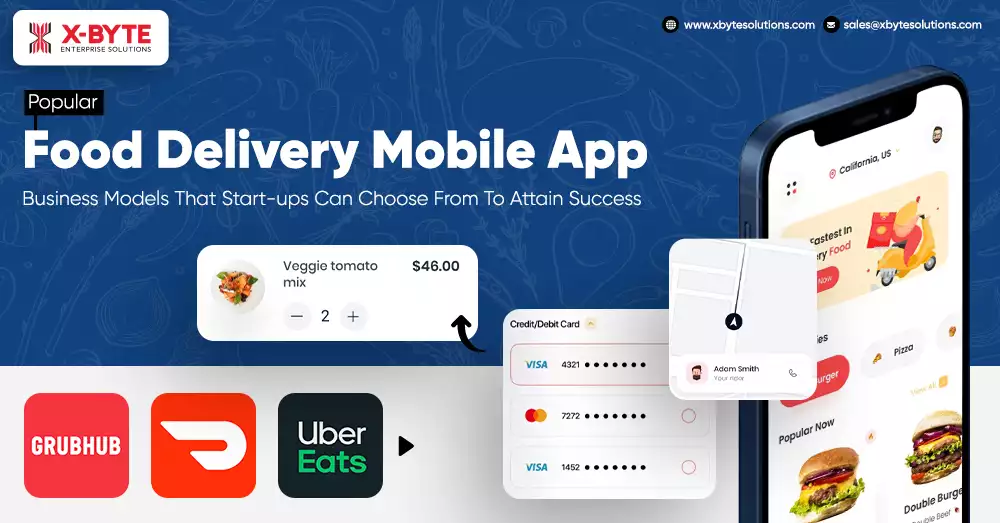-
solutinos
-
Hire
Frontend Developer
Backend Developer
-
NodeJS Developer
-
Java Developer
-
Django Developer
-
Spring Boot Developer
-
Python Developer
-
Golang Developer
-
Ruby on Rails Developer
-
Laravel Developer
-
.NET Developer
Technology
-
Flutter Developer
-
React Native Developer
-
Xamarin Developer
-
Kotlin Developer
-
Cross-Platform Developer
-
Swift Developer
-
MongoDB Developer
-
C Developer
-
Smart Contract Developers
Cloud
-
-
Services
Mobile Development
Web Development
- Work
-
Multi Services App
-
Food Delivery App
-
Grocery Delivery App
-
Taxi Cab Booking App
-
Multi Services App
-
OTT Platform APP
-
Social Media APP
-
Freelance Service App
-
Car Rental App
-
Medicine Delivery App
-
Liquor Delivery App
-
Sports Betting App
-
Online Coupon App
-
eLearning App
-
Logistics & Transportation App
-
Courier Delivery App
-
On-Demand Real Estate App
-
E-Wallet APP
-
Online Dating App
-
Handyman Services App
-
-
Process
-
Company

Food start-ups have contributed a lot to the on-demand economy and they have a simple approach. The idea behind these start-ups is to offer convenience and save time. Each customer who avails of these services can enjoy hassle-free ordering. The convenience comes through different aspects like :
- Convenience to make fast decisions
- Get order delivered faster
- Easy payment transactions
- Convenience to order from multiple food outlets
- Convenience to save orders and re-order
- Get it delivered to your doorstep
Amazing Stats To Check Out For The Food Delivery Industry
- The major food delivery markets like Australia, the US, and Canada witnessed 4-8 times growth from 2018-2021. Also, the food delivery market saw an increase in revenues by $4 billion between 2019 & 2020.
- The food delivery market is predicted to grow nearly by $43 billion by 2023 to touch $154.34 billion.
The above stats clearly state that there is significant growth seen in the food delivery market and will continue to grow in the future as well. So, if you want to join the revolution, this is the right time to opt for on-demand Food delivery app development services to get your food delivery business online successfully.
With the introduction of the comprehensive approach adopted by on-demand food industry, it has taken over the traditional markets. The 3 main components followed by a restaurant to offer an amazing experience to their customers is :
- Ordering
- Cooking
- Delivering
Based on the above components there are 3 different business models trending currently and they are :
Trending Business Models For Food Delivery Applications
1. The Order Only Model
It is one of the perfect business models for start-ups. This model allows the app owners to connect multiple restaurants and food outlets with the end customers. In short, the app owner offers a single platform for several restaurants to register and provide food delivery services to a large customer base.
As the name suggests this business is order-only so the meal delivery services depend on the delivery staff of the restaurant or 3rd party courier services hired by the restaurant. It means the app owner is not involved in any type of logistics.
Benefits Of Order Only Model
- It doesn’t require a huge investment
- The business owner can start on a small scale and then add more restaurants as the business grows
- The app owners don’t have to deal with any preparation or delivery of food.
Examples – JustEat, Grubhub, FoodPanda
How Does Order Only Business Model Function?

This model works follows a simple process like :
- Customers can browse through the menu and place an order through the app.
- After the order is received by the restaurant, the order is confirmed by the restaurant and the customer is notified about the same through a message.
- Next, the order is delivered to the customer’s doorstep by the delivery staff of the restaurant.
- For any issues, the delivery staff directly gets in touch with the customer to complete the delivery.
Most app owners charge a fixed amount as a commission fee for every order placed through their app from the restaurants.
Limitations of Order only model
- Limited meal options as app list only the items that restaurants can offer
- App owner doesn’t have control over food packaging or quality which means if the customers are not happy with the quality of food, the app owner cannot help them which becomes difficult to retain them as well.
Certainly, the above limitations can be taken care of by focussing on effective PR campaigns which help get new customers and potential restaurants. Also, build a loyalty program that helps you retain customers.
2. Order With Delivery Business Model
It is similar to the order-only business models except for the fact that it manages the logistics. Hence, the app owners can accept the orders placed by end customers and complete order delivery.
It is a flexible model for restaurants as the restaurants do not have to deal with logistics. Also, they can gain from the existing customer base present on the app.
The app owner in this model works with multiple courier service providers to initiate doorstep food delivery for the customers.
Examples – Postmate, Doordash, Zomato, UberEat
How Does Order With Delivery Business Model Function?
The following steps will help you know how this model works :
- The menu can be accessed by the customers to place orders using the app
- After the order is received by the restaurant they send a message to notify the customers for order confirmation.
- After the order is prepared, the restaurants get in touch with courier service providers
- The delivery services available in nearby locations will pick up the order and deliver it to the respective location
- Based on the distance covered, a delivery fee will be charged to the customers.
The admin of the app can charge a flat fee as a commission from respective restaurants against each order delivered. Also, they can charge a fee from the customers according to their drop-off point.
Limitations of Order with Delivery Business Model
- One of the major challenges with this model is establishing smooth transportation staff.
- The delivery staff needs to be well-trained and process faster deliveries on time.
- The delivery delays can result in negative feedback from customers.
To beat these challenges, you need to focus on timely delivering even during peak hours. Hiring more delivery staff can help you streamline the deliveries.
3. The Fully Integrated Model
This model involves a single service provider who manages the whole food chain. It means all the phases from cooking food to delivering it to the end customer are handled by a single provider.
Certainly, this model is completely different from the other two models stated above and involves a substantial investment. This model is preferred by established restaurants to serve their loyal customers. It helps them to increase their sales by helping the customers to place an order from the comfort of their house.
Also, some business owners hire cloud kitchens or ghost kitchens to cook meals. In such cases, they choose this business model and deliver food under their brand. Well, in this case, the dine-in facility is not offered by the restaurant and only doorstep delivery is facilitated.
Example – Dominos, Pizza Hut
How does The Fully Integrated Model function?
- Here the customers can go through the menu and place the order with the help of the app
- After receiving the order, the restaurant confirms it and sends a notification message to the customers for order confirmation
- After the order is prepared, the restaurant sends delivery personnel to deliver the order to the customers’ location.
Limitations of Fully Integrated Business Model
- Cost is the main concern with this model. It includes a huge upfront capital as a single service provider needs to handle everything from meal preparation to the delivery process.
- Obtaining new customers and retaining them is not easy unless the restaurant is a popular brand or already has gained recognition in the market.
- The courier costs associated with this model are considerably high which may affect the profitability rate.
You can combat this challenge by guarding considerable investment. Try to have a proper plan to attract investors to your business.
Food Delivery Mobile App Business Model – Which One Is The Perfect Model
If you are planning to invest in food delivery mobile app development and are confused as which one to choose, then we can say that each food delivery mobile app business model come with benefits and drawbacks. But, some factors that make the order and delivery model they preferred model are
- You can earn commissions from restaurants as well as customers
- Restaurants do not have to worry about logistics
- The app usage is fast and easy
Final Words
The start-ups planning for online food delivery app development can go with order and delivery model. Well, you don't need to go with this model only. You can assess your business goals and requirements to choose the right business model for your food delivery mobile app development venture.
When it comes to building a food delivery app, you can choose from custom or readymade food ordering and delivery solutions.
If you want to launch your app fast and have a budget constraint then ready-made app solutions can help. But, if you want a sophisticated app with features and functionalities that match your business requirement then hire a custom food delivery App development company to develop your app from scratch.
Depending on the development solutions you choose the food delivery app development cost vary. Whether you want to build a white label food delivery app or custom app, get the right assistance on features, tech stack, etc and know the overall cost for your app, connect with X-Byte Enterprise Solutions to help you get the right start for your start-up.
